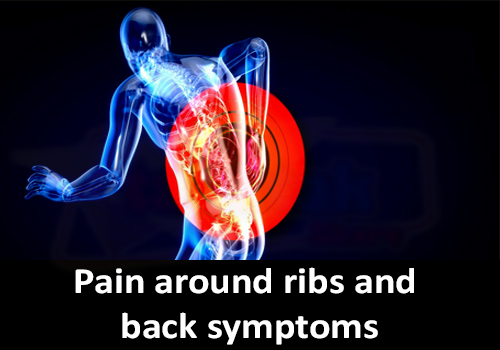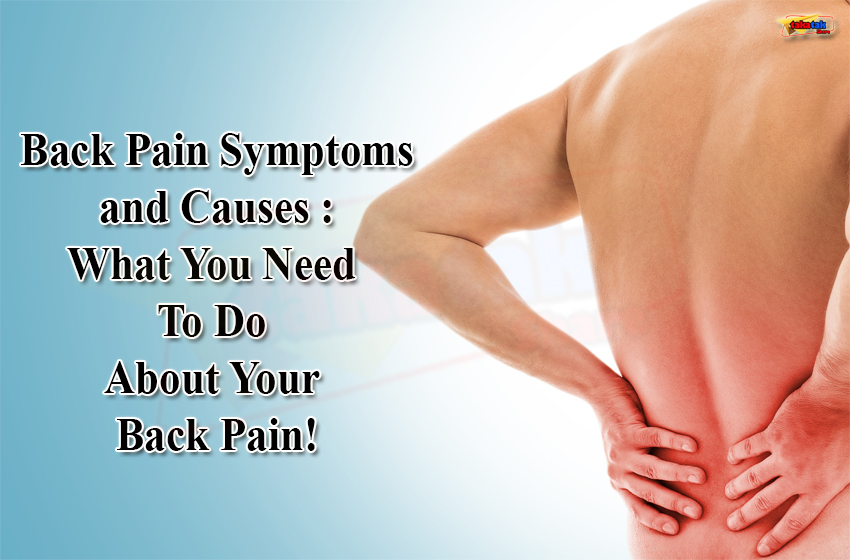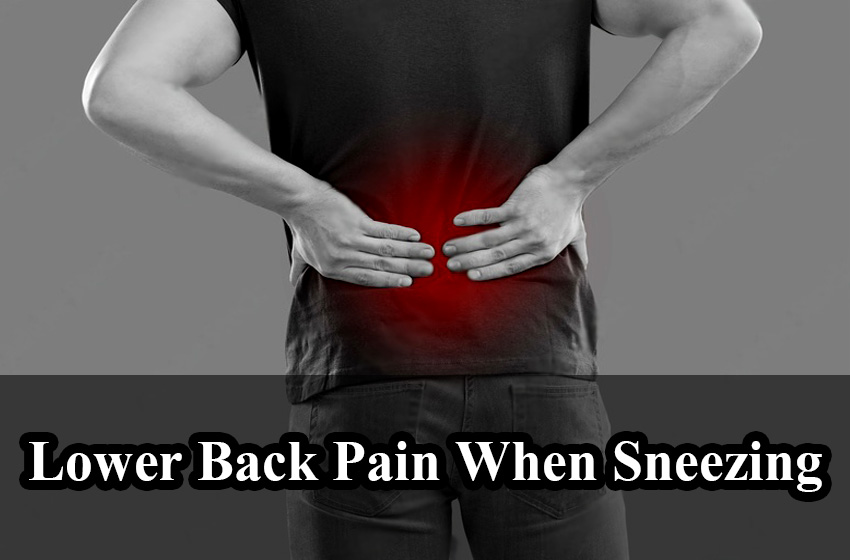Back Pain Symptoms and Causes : A prevalent discomfort, can stem from various factors such as poor posture, muscle strain, or underlying health conditions.
Table of contents
About Back Pain
Back Pain Symptoms and Causes : Back Pain is a common ailment affecting people of all ages and backgrounds. It can manifest for various reasons, including muscle strain, poor posture, herniated discs, arthritis, or structural issues in the spine. The discomfort ranges from mild to severe, impacting daily activities and quality of life.
Back pain is a prevalent health issue that can manifest through various symptoms, indicating a range of potential causes. Common symptoms of back pain symptoms and causes include a persistent dull ache, sharp or stabbing pain, stiffness, and discomfort that may radiate into the legs. Individuals may also experience muscle tension, limited mobility, and difficulty in certain movements.
The back pain sypmtoms and causes of back pain are diverse, often stemming from lifestyle factors, muscle strain, and structural issues. Poor posture, improper lifting techniques, and overexertion can lead to muscle strain, resulting in back pain. Conditions such as herniated discs, arthritis, and spinal abnormalities can contribute to chronic or recurrent back pain. Additionally, underlying health issues like kidney problems, infections, or gastrointestinal disorders may also manifest as back pain.
While short-term back pain symptoms and causes is often manageable with self-care measures, persistent or severe cases warrant professional medical attention. Consulting with a healthcare professional can help identify the root cause of the pain and guide the implementation of an appropriate treatment plan. Maintaining good posture, a healthy lifestyle, and addressing any contributing factors can contribute to preventing and managing back pain symptoms and causes more effectively.
What You Need To Do About Your Back Pain
- Consult a Healthcare Professional: If your back pain is persistent or severe, consult with a healthcare professional such as a doctor, physical therapist, or orthopedic specialist. They can help diagnose the underlying cause and recommend an appropriate treatment plan.
- Rest and Modify Activities: Short-term rest may be beneficial, but avoiding prolonged inactivity is crucial. Modify activities that exacerbate the pain, and gradually resume normal activities as advised by your healthcare provider.
- Use Ice and Heat Therapy: Applying ice packs during the initial 48 hours can help reduce inflammation, followed by heat therapy to relax muscles. Always use a cloth or towel to protect your skin when applying ice or heat.
- Over-the-Counter Pain Medications: Non-prescription pain relievers like acetaminophen or ibuprofen can provide temporary relief. Follow the recommended dosage and consult with a healthcare professional if needed.
- Exercise and Stretching: Engage in gentle exercises and stretches to improve flexibility and strengthen the muscles supporting your back. Consult with a healthcare professional or a physical therapist for a tailored exercise plan.
- Maintain Good Posture: Be conscious of your posture, whether sitting, standing, or lifting. Use ergonomic furniture, adjust your workspace, and practice good body mechanics to prevent further strain on your back.
- Weight Management: Maintain a healthy weight to reduce stress on your spine and decrease the risk of back pain.
- Consider Ergonomic Changes: Evaluate your daily activities and make ergonomic changes where possible. This includes adjusting your workspace, using proper lifting techniques, and choosing supportive furniture.
- Ensure Quality Sleep: Invest in a comfortable mattress and pillows that provide adequate support for your back. Ensure that your sleeping posture promotes spinal alignment.
- Seek Physical Therapy: A physical therapist can guide you through specific exercises and techniques to address your back pain and prevent future issues.
Pain around ribs and back symptoms

Pain around the ribs and back can be indicative of various conditions. Common symptoms associated with this type of pain include:
- Sharp or Dull Pain: The pain may be sharp, stabbing, or a dull ache, often felt around the ribcage or extending into the back.
- Tenderness to Touch: Discomfort or tenderness when pressing on the ribs or the back.
- Pain with Movement: Pain may worsen during certain movements, such as twisting, bending, or breathing deeply.
- Difficulty Breathing: In some cases, pain around the ribs and back can be associated with difficulty breathing, particularly if the pain is related to ribcage or chest wall issues.
- Radiating Pain: The pain might radiate from the back to the front or vice versa, and it can extend to the shoulder blades.
- Coughing or Sneezing Aggravates Pain: Actions like coughing or sneezing may exacerbate the discomfort.
- Possible Nerve Involvement: If the pain involves nerve compression, you may experience sensations like tingling or numbness in the chest or back.
- Swelling or Bruising: Injuries or trauma to the ribs may result in swelling, bruising, or visible signs of trauma.
Can gas cause Back Pain
Yes, gas can potentially cause back pain. Gas in the digestive system can create pressure and bloating, leading to discomfort that may radiate to different areas, including the back.
- Diaphragm Irritation: The diaphragm, a muscle separating the chest and abdominal cavities, can refer pain to the back when irritated. Gas and bloating in the stomach can contribute to diaphragmatic irritation, causing discomfort in the back.
- Pressure on Nerves: Gas-related bloating and distension can put pressure on surrounding structures, including nerves in the abdomen and back. This pressure may lead to pain that can be felt in the back.
- Muscle Tension: Excessive gas can cause the abdominal muscles to tense up, and this tension may radiate to the back, causing discomfort.
Pain in upper left side of back female
Pain in the upper left side of the back in females can have various causes, ranging from muscular issues to internal organ problems.
- Muscle Strain or Sprain: Overuse or improper lifting can lead to muscle strain or sprain, causing pain in the upper back.
- Rib Issues: Inflammation, injury, or even a fractured rib can cause localized pain in the upper left back.
- Thoracic Spine Issues: Conditions affecting the vertebrae and discs in the thoracic spine, such as herniated discs or osteoarthritis, may cause back pain.
- Gastrointestinal Issues: Problems with organs in the upper left abdomen, like the stomach, pancreas, or spleen, can sometimes cause referred pain to the upper back.
- Cardiac Issues: In rare cases, certain heart conditions may cause pain that radiates to the upper back.
- Lung Conditions: Lung-related issues, such as pneumonia or pleuritis, can cause pain in the upper back, especially on the left side.
- Kidney Problems: Kidney issues, such as infections or stones, may cause pain in the upper back.
- Posture and Ergonomics: Poor posture, especially if spending extended periods sitting, can contribute to upper back pain.
Lower back pain when walking
Lower back pain while walking can be caused by various factors, and it’s essential to identify the underlying cause for effective treatment.
- Muscle Strain: Overuse or improper use of the muscles in the lower back can lead to strain and pain, especially during physical activities like walking.
- Poor Posture: Incorrect posture while walking can contribute to lower back pain. Maintaining proper alignment and using supportive footwear may help alleviate discomfort.
- Spinal Issues: Conditions such as herniated discs, spinal stenosis, or degenerative disc disease can cause pain in the lower back, which may be exacerbated by walking.
- Arthritis: Osteoarthritis or other forms of arthritis can affect the joints in the lower back, leading to pain during movement.
- Sciatica: Compression or irritation of the sciatic nerve, which runs from the lower back down the legs, can cause pain that may worsen with walking.
- Poor Core Strength: Weak core muscles may contribute to instability in the lower back, leading to pain during activities like walking.
- Overuse or Strain: Engaging in prolonged or intense walking without proper conditioning can strain the muscles and structures in the lower back.
Upper middle back pain when breathing
Upper middle back pain that is worsened by breathing may have several potential causes.
- Muscle Strain: Overexertion or poor posture can strain the muscles in the upper back, leading to pain that may intensify with breathing.
- Thoracic Spine Issues: Conditions affecting the thoracic spine, such as herniated discs, degenerative disc disease, or thoracic spine osteoarthritis, can cause pain exacerbated by breathing.
- Costochondritis: Inflammation of the cartilage where the upper ribs attach to the sternum can lead to pain in the upper middle back, especially during breathing or chest movement.
- Thoracic Outlet Syndrome: Compression of nerves or blood vessels in the upper chest can cause pain in the upper back that may worsen with breathing.
- Pleurisy: Inflammation of the lining around the lungs (pleura) can cause sharp pain in the upper back that intensifies with breathing.
- Rib Issues: Fractured or inflamed ribs can result in upper back pain, particularly when breathing deeply.
- Respiratory Infections: Conditions like pneumonia or bronchitis can cause upper back pain that worsens with breathing.
- Gastrointestinal Issues: Problems with organs in the upper abdomen, such as the stomach or pancreas, can sometimes cause referred pain to the upper back.
Pain in upper back when breathing
Upper back pain that worsens with breathing could be associated with various conditions.
- Muscle Strain: Overuse or strain of the muscles in the upper back, often due to poor posture or heavy lifting, can cause pain that intensifies with breathing.
- Rib Issues: Inflammation, injury, or fractures in the ribs can result in upper back pain, particularly when breathing deeply.
- Costochondritis: Inflammation of the cartilage that connects the ribs to the sternum can lead to pain in the upper back, especially during breathing or movement of the chest.
- Thoracic Spine Problems: Conditions affecting the thoracic spine, such as herniated discs, degenerative disc disease, or osteoarthritis, may cause pain that worsens with breathing.
- Pleurisy: Inflammation of the lining around the lungs (pleura) can cause sharp pain in the upper back, particularly with breathing.
- Respiratory Infections: Conditions like pneumonia or bronchitis can cause upper back pain that is exacerbated by breathing.
- Gallbladder or Pancreas Issues: Problems with organs in the upper abdomen may refer to the upper back.
- Heart-related Issues: Although less common, certain heart conditions may cause referred to the upper back, especially in women.
How to find back pain doctor near me
To find a back pain doctor or specialist near you, you can follow these steps:
- Primary Care Physician (PCP): Start by contacting your primary care physician. They can provide an initial evaluation, offer treatment options, or refer you to a specialist if necessary.
- Health Insurance Provider: Check with your health insurance provider to find doctors and specialists in your network. Insurance websites often have search tools to help you locate healthcare providers in your area.
- Online Doctor Directories: Use online directories to search for doctors specializing in back pain. Websites like Healthgrades, Zocdoc, or Vitals allow you to search for healthcare professionals based on location, specialties, and patient reviews.
- Hospital Affiliation: If you prefer a specific hospital, check their website for a directory of physicians and specialists associated with that hospital.
- Referrals: Ask friends, family, or colleagues for recommendations. Personal referrals can provide insights into the doctor’s reputation and patient care.
- Chiropractors or Physical Therapists: Chiropractors and physical therapists often work with patients experiencing back pain. They might be able to recommend or refer you to a specialist.
- Medical Associations: Check with medical associations related to back pain or spine health, such as the American Academy of Orthopaedic Surgeons (AAOS) or the American Association of Neurological Surgeons (AANS). These organizations often have directories of qualified specialists.
- Online Reviews: Read online reviews from patients to get an idea of the doctor’s reputation and the quality of care they provide. However, keep in mind that reviews should be considered as part of a broader evaluation.
- Local Hospitals or Clinics: Contact local hospitals or clinics and inquire about spine or orthopedic departments. They can provide information on specialists who focus on Back Pain.









